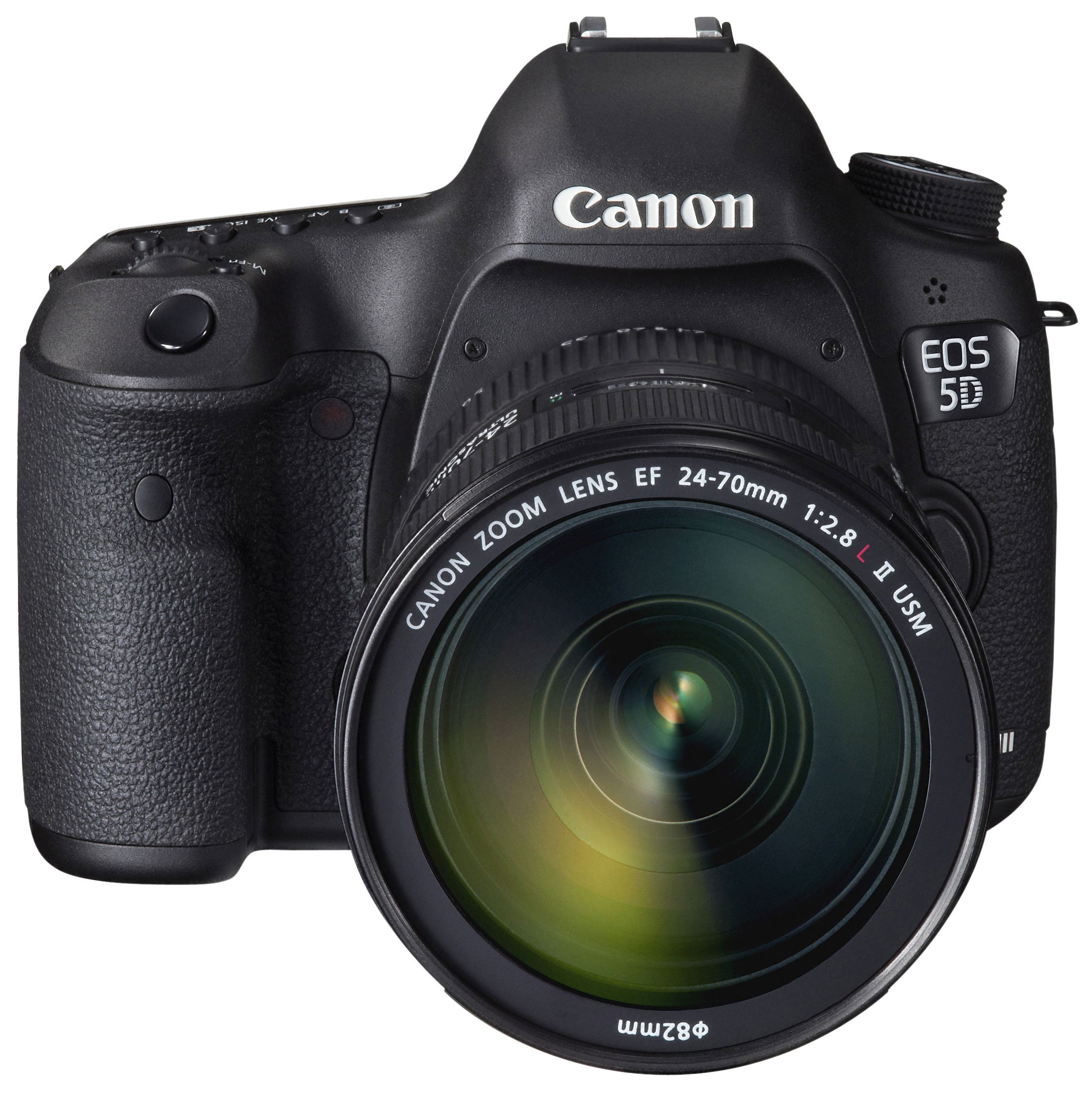
Canon EOS 5D Mark III
-
-
Written by Gordon Laing
Canon EOS 5D Mark III verdict
The EOS 5D Mark III addresses these criticisms, upgrading the continuous shooting, metering, viewfinder, bracketing, build and most of all the autofocus system. The screen is also bigger and wider, there’s now twin memory card slots, and a number of small but useful enhancements to the movie capabilities. The sensor may sport a similar resolution as before, but delivers visibly superior photo and video quality. So while I was initially concerned there were no killer features on the Mark III nor a unique specification which allowed it to stand beyond rivals, the fact is it is simply a very well-designed DSLR that’s a joy to use and delivers excellent results.
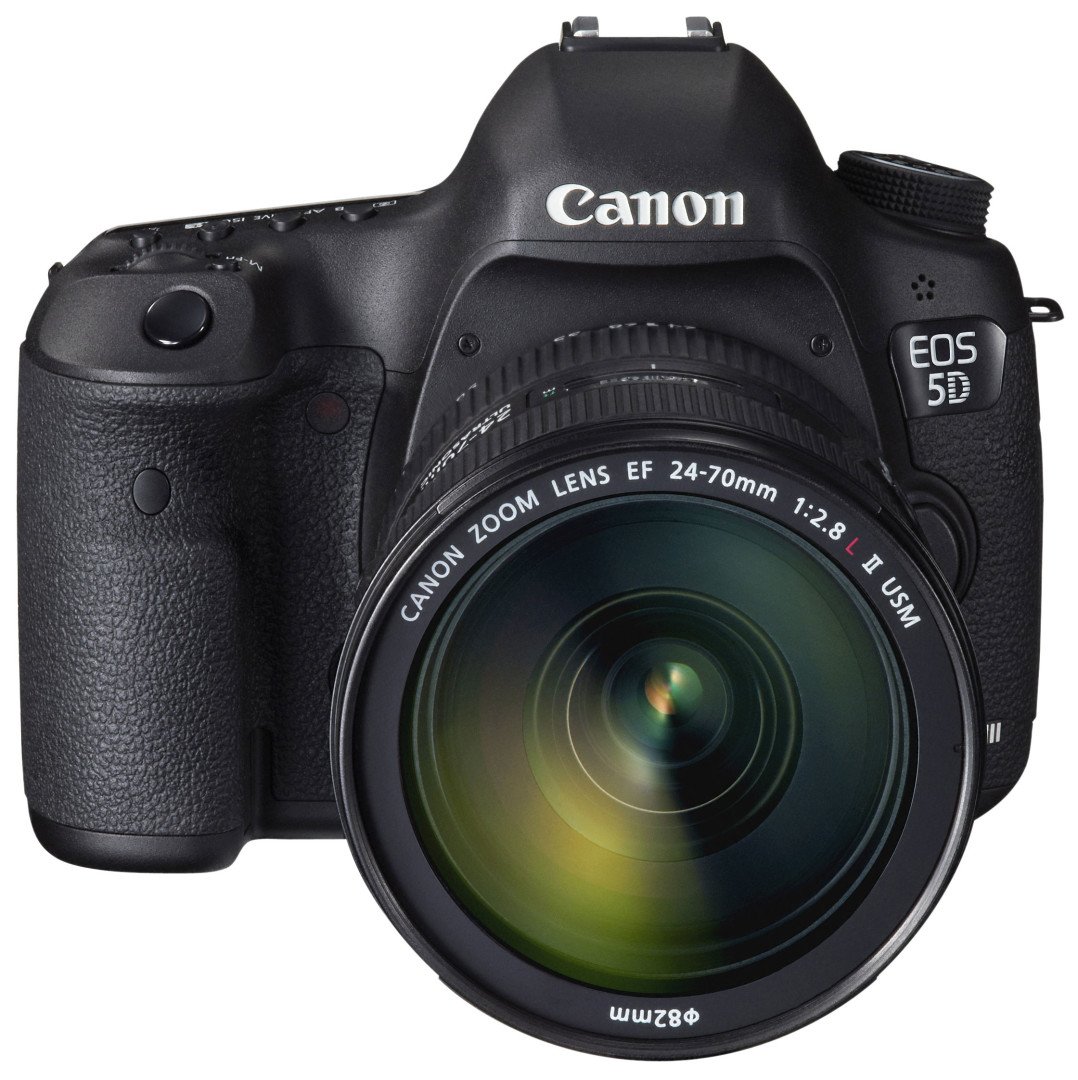
I’ll start with image quality: the in-camera JPEG defaults of the Mark III inherit a punchy style seen on other recent Canon DSLRs that’s sharper and more contrasty than its predecessor. This delivers pleasing results out-of-camera, although can result in some edge artefacts especially on images with lots of very fine details like my landscape test scene. Personally speaking I’d dial-down the contrast and sharpness a little for more natural-looking results.
Shoot in RAW though and you can transform the image quality, swapping the arguably over-cooked default JPEG style for highly detailed, natural-looking results. My recipe for processing RAW files in Adobe Camera RAW to reveal noise behind the scenes delivered great looking output and I’d encourage you to give it a shot for yourself: turn off all noise reduction, and set the sharpening to 70 / 0.5 / 36 / 10.
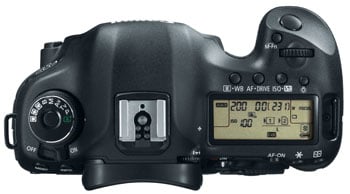 |
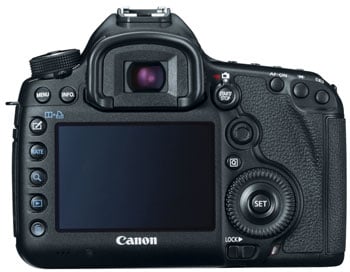 |
The actual resolving power of the Mark III for still photos is essentially the same as its predecessor, but noise levels are visibly lower: this is a camera you’d be happy shooting in the 1600-6400 ISO range. Some may question the point of high ISOs like these, but if you’ve ever shot anything in low light from sports to weddings or even just kids parties, you’ll frequently find yourself in this sensitivity range even with fast lenses, so decent performance here is very much welcome.
Comparing the Mark III to the D800 is a very interesting exercise. The Nikon comfortably out-resolves it and delivers – to my eyes – preferable, more natural-looking results. Such is the monstrous resolution of the D800 that even when set to its medium resolution it’ll match the detail of the Mark III. When shooting in JPEG with the default settings, the Mark III appears to enjoy an edge in noise levels at 800 ISO and above, but shoot in RAW with noise reduction turned off and you’ll discover the amount of grain when viewed at 100% is actually roughly the same. You can of course also down-sample the D800’s images to the same as the Mark III and further reduce those noise artefacts.
It’s an impressive result for the D800 which, in my view, enjoys the edge in still photo quality overall so long as you shoot in RAW, use a tripod and focus very carefully. But the bottom line is both the Mark III and D800 deliver fantastic looking images which most photographers would be delighted with.
In terms of movie quality, the initial specifications suggest the Mark III is little different to the Mark II beyond the addition of a headphone jack, silent control options and the ability to encode at higher bit rates if desired. But film the same scene with the Mark III, D800 and Mark II and you’ll notice significant differences. Moire was always an Achilles Heel for DSLRs and both the Mark II and D800 suffer from it, but Canon seems to have completely eliminated it from the Mark III. I couldn’t see it anywhere on any of the clips I filmed. Noise levels are also much lower than before, and like stills it’s possible to film at 6400 ISO without too much compromise. So in terms of movie quality it takes the lead over the D800, not to mention every video-equipped DSLR before it.
So while I’m disappointed not to find a movie crop mode, clean HDMI output or 1080p frame rates above 30fps, the simple fact is the Mark III delivers better-looking video than its predecessor or current big rival. Add the headphone jack, silent controls and intra-frame compression options and you’ve got a camera which feels much more confident for movies.
The AF and continuous shooting are also significantly improved, especially the former which inherits the brand new 61-point system of the EOS 1D X. Canon’s basically equipped with Mark III with the same AF system as the top-end model its pitching to professional sports shooters for the Summer Olympics. Coupled with a drive which can deliver the quoted 6fps and the Mark III is transformed into a camera you really can use for action and sports photography, unlike its predecessor which embarrassingly fell behind the XD and XXD lines on speed. Sure the 7D is still a little faster, but many would be happy to trade the extra fps for the new AF system. I’ve detailed the handling and performance in the main review.
Composition has improved too with a bigger and more accurate viewfinder sporting on-demand graphics and 100% coverage, along with a 3:2 shaped screen which is filled by images and easier to focus with. The build quality and ergonomics are also a big step-up from the Mark II with the new model feeling much more solid and comfortable in your hands, while various controls inherited from the 7D really make much more sense.
Indeed you could describe the Mark III as a 7D fitted with a full-frame sensor and the AF system from its pro sports DSLR, and that’s a dream combination for many shooters. Canon’s even relented and equipped it with seven-frame bracketing.
So what’s not to like? Well as someone who shoots lots of video and live view, I’d have preferred to have an articulated screen. I’m also one of those people who finds built-in flashes valuable, and is it too much to ask for built-in interval timer facilities like Nikons models? As mentioned above it would have been nice to have 1080p at 50 or 60fps for slow motion effects, a movie crop option and a clean HDMI output to feed an external recorder. While I’m at it, the various mirrorless and fixed mirror designs are still out-performing the Mark III and other traditional DSLRs for continuous AF during video or Live View shooting. Revealingly though most of these complaints revolve around video and perhaps will be addressed by the upcoming movie DSLR the company teased last year.
Arguably the biggest problems for the Mark III are that all its upgrades come at a much higher price than the Mark II and the fact a 36 Megapixel DSLR is available for less. So before my final verdict, here’s how it compares to the Mark II and the D800.
Compared to Canon EOS 5D Mark II
 |
The first comparison I’ll make is against the earlier Canon EOS 5D Mark II, a model which will continue to sell alongside the new Mark III. Three and a half years separate the two bodies, but they still share a number of similarities including a full-frame sensor with much the same photo resolution, and the same best-quality movie frame rates. They also look pretty similar when viewed from the front, but look around the entire body, and especially under the hood and you’ll find the Mark III enjoys a raft of enhancements which address many criticisms of its predecessor.
The AF system has been dramatically improved from an ageing 9-point AF system with one cross-type sensor to the same 61-point AF system with a whopping 41 cross-type sensors as the professional EOS 1D X. Continuous shooting has been boosted from an average 3.9fps to a more useful 6fps. The viewfinder now enjoys 100% coverage, up from 98%, while on-demand LCD graphics on the focusing screen allow you to toggle an alignment grid and ensure inactive focusing points never clutter the view. Meanwhile the metering is more sophisticated with Canon’s 63-zone iCFL system replacing the basic 35-zone of the Mark II.
The screen has also been boosted from 3in / 920k / 4:3 to 3.2in / 1040k / 3:2 to match the shape of images and exploit the full display resolution for a larger and more detailed view; 16:9 video also appears bigger and more detailed which helps when focusing. Speaking of video, the maximum resolution and frame rate remains the same, but the Mark III is now equipped with a lower compression option (for better quality and easier editing), along with longer clips lasting a second shy of half an hour and a headphone jack to monitor audio, while also enjoying lower moire and rolling shutter artefacts.
Exposure bracketing is greatly improved with the option of three, five or seven frames compared to just three on the Mark II. You also get multiple exposure capabilities up to nine frames, and a built-in HDR mode which combines three images with the choice of four tone maps.
The body is tougher and enjoys better resistance to weather, although Canon’s cagey as to exactly how much. The controls enjoy a welcome revamp inspired by the 7D and featuring the 1D X’s touch-sensitive rear control for discreet adjustments while filming. The Compact Flash card slot is now accompanied by an SD slot, allowing you to seamlessly overflow (for images), backup as you go, or record one format to one card and another to the second. The battery is the same as before but now lasts a little longer and there’s a new GPS accessory, along with Wifi and portrait grip options.
As for the sensor, it’s gained a Megapixel in resolution, but three and a half years of technology improvements mean it’s more efficient than before, supporting a higher maximum sensitivity of 25,600 ISO (expandable to 102,400 ISO), and delivering lower noise levels at high ISOs.
It all adds up to a significant upgrade in overall handling and performance, although at a comfortably higher price than the Mark II. The enhancements arguably make the 5D Mark III the camera the 5D Mark II should always have been, but you’ll be paying considerably more to address the deficiencies of that model. So is it worth upgrading?
If you’re an action shooter I’d say so as the improvements in AF, continuous shooting, handling and build, not to mention superior low light performance will all be very beneficial. Portrait and wedding shooters will also like the Mark III for much the same reasons. Landscape shooters may appreciate the Mark III’s deeper bracketing, but they could alternatively buy a much cheaper third party cable release which can offer deeper bracketing still on older models – or go for the D800 and enjoy more detailed output. Meanwhile professional film-makers will like the lack of moire, lower compression, touch-control and headphone options, but there’s not a great deal new to tempt less demanding videographers. It’s also worth remembering many 5D Mark II owners have already expanded its functionality with third-party rigs and accessories which resolve many of its video issues; indeed if you’re considering buying a 5D Mark III for video, you should also look at what the same money could buy in terms of a Mark II and accessories.
I think Canon’s done the right thing by keeping-on the 5D Mark II in the range because it still satisfies the desires and requirements of many photographers and film makers. The Mark III may out-perform it on pretty much everything other than photo resolution, but the Mark II remains a superb camera and one that’s never looked like better value. Costing around 50% less than the new model, it’s a tempting choice for many, especially those who can either address its issues with accessories or simply don’t mind.
See my Canon EOS 5D Mark II review for more details.
Compared to Nikon D800
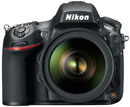 |
Nikon’s D800 represents the biggest competition for the EOS 5D Mark III. Both are high resolution semi-pro full-frame bodies with Full HD video and stacks of features including 100% viewfinder coverage, twin card slots and both microphone and headphone jacks – but refreshingly both companies have taken quite different approaches to headline specifications.
The biggest difference of course regards resolution: 36 Megapixels on the D800 versus 22.3 Megapixels on the 5D Mark III – that’s 50% more pixels squeezed into the same surface area of the Nikon. In terms of linear resolution, the D800 records 7360×4912 pixels, which at 300dpi could be reproduced at 24.5×16.4in. The 5D Mark III records 5760×3840 pixels, which at 300dpi could be reproduced at 19.2×12.8in. So in terms of resolving power, the D800 enjoys a measurable advantage and greater latitude for cropping.
Impressively if you shoot in RAW and turn off noise reduction, you’ll also find the D800 delivering similar degrees of noise as the Mark III when viewed at 100%. So when it comes to stills, the D800 delivers more detail than the Mark III without compromising noise.
Moving on, the D800 has more sophisticated metering (91k sensor versus 63-zone), a faster flash sync speed (1/250 versus 1/200), a popup flash with wireless flash control, deeper bracketing (nine frames versus seven), a choice of crop modes including a 1.5x option for video, clean HDMI output (for feeding an external recorder), a shutter block rated for 200,000 versus 150,000 actuations, the ability to AF with a limited number of points at f5.6 to f8, built-in timelapse and interval timer options, and a USB-3 port (versus USB-2 on the Canon). The D800 also claims to exploit the speed of UHS-1 SD cards, although in my tests the flush times of the Canon were often quicker, even taking file sizes into account.
In its favour, the Canon EOS 5D Mark III has a more sophisticated AF system (61-points with 41 cross-type sensors versus 51-point with 15 cross-type sensors), faster continuous shooting at the maximum resolution (6fps versus 4fps, although the Nikon can be boosted to 6fps in its 16 Megapixel DX mode with the battery grip), much faster flushing of the buffer, two stops higher maximum sensitivity (102,400 ISO versus 25,600 ISO), a wider screen which matches the shape of images, thereby maximising their displayed size and detail, silent control over aperture and other settings while filming video (the D800 only has aperture control buttons which become inactive when recording), lower noise and less moire effects on video, and built-in HDR with three frames versus two.
Ultimately the D800 has the potential to deliver better quality stills than the Mark III, but the Canon enjoys faster handling and better video, arguably making it a better general-purpose camera. It all depends where your priorities lie.
Before concluding though, it’s important to note Nikon offers an alternative version of the D800 with the effect of the anti-aliasing filter removed: the D800E version unlocks the maximum resolution of the sensor and hands-over moiré management to the photographer. This option, along with the high resolution of the sensor shows Nikon going after those who demand the maximum resolvable detail without investing in medium format equipment; indeed in this respect the D800 can be seen more as a medium format rival than a direct competitor to the 5D Mark III.
Oh yes and there’s one final important difference to note: the RRP of the D800 is less than the 5D Mark III by a not insignificant amount.
For more details see my Nikon D800 review.
Canon EOS 5D Mark III final verdict
The Canon EOS 5D Mark III is a very satisfying all-round DSLR. It feels tough, handles quickly and delivers great-looking photos and video. Canon has pretty much addressed all the complaints of the Mark II and also included all the nice extras commonly offered by Nikon, like 100% viewfinder coverage, twin card slots, deep bracketing and an AF system packed with points.
This is a camera which out-performs the Mark II on everything other than photo resolution, and in use feels a world-apart from its predecessor. It is the camera the Mark II always wanted to be – or arguably should have been.
But the price of all these enhancements sadly haven’t been absorbed by three and a half years of technology evolution. To be fair exchange rates with Japan are quite different to what they were, but the literal bottom line is the Mark III is not a cheap camera by any means – indeed it typically costs 50% more than a Mark II and also carries a comfortable premium over its big rival the D800, which lest we forget enjoys 36 Megapixels.
Price is one major issue and the D800’s resolution is undoubtedly another. I’ve seen many higher resolution cameras actually deliver minimal benefits over older models, but there’s no denying the sheer resolving power of the D800. This really is as close as a DSLR has come to medium format performance and those who value detail above anything else will almost certainly prefer the Nikon.
But these points aside, the only real criticisms of the Mark III regard the absence of a handful of movie capabilities which are probably reserved for the upcoming video DSLR model, and the limitations of a traditional DSLR for continuous AF during movies and live view. Given Canon wouldn’t or simply couldn’t address these issues, there’s really little or anything to seriously complain about here.
Despite becoming fond of mirrorless cameras in recent years, I’ll be the first to admit I loved my time with the 5D Mark III. It is one of the most confident and enjoyable DSLRs I’ve used and easily earns my Highly Recommended award. Is it better than the D800? No, but it’s not worse either. They’re different sorts of cameras. Based on my tests I’d say the D800 is preferable for sheer detail on still photos so long as you shoot carefully using a tripod, whereas the Mark III feels like a more rounded camera with its faster shooting, more sophisticated AF and superior video. I would however be delighted with either and I’m pretty sure you would too. Think carefully about what kind of photos you take and which system has the most appropriate lenses, then start enjoying the superb results each of these cameras will deliver. Traditional DSLRs may be lacking some of the features and glamour of the latest mirrorless models, but the Mark III and D800 both provide many compelling reasons to upgrade from their predecessors and prove there’s plenty of life in the old dog yet.
Good points
Great photo and video quality with low noise at high sensitivities.
Powerful 61-point AF system with easy presets.
Large viewfinder with 100% coverage and detailed 3:2 screen.
6fps continuous shooting.
Good ergonomics, build quality and twin card slots.
Bad points
No built-in flash or wireless controller.
No built-in Wifi or GPS. Both are expensive accessories.
No articulated screen, no interval timer.
No movie crop mode, no clean HDMI, no continuous movie AF.
36 Megapixel Nikon D800 available for less.



